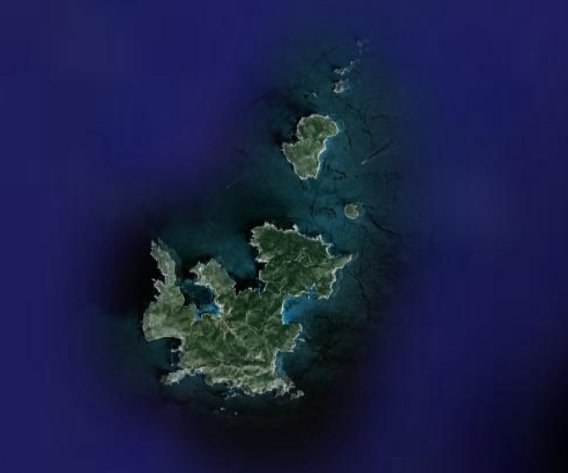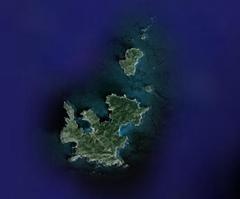
Cabrera National Park: Visiting Hours, Tickets, and Travel Guide – Palma, Spain
Date: 14/06/2025
Introduction
Cabrera National Park, located 10–50 kilometers south of Palma de Mallorca, Spain, is among the Mediterranean’s most remarkable protected areas. This maritime-terrestrial park, composed of 19 islands and islets, is celebrated for its pristine natural landscapes, exceptional biodiversity, and profound historical significance. With roots tracing back to ancient Mediterranean civilizations, Cabrera has been shaped by centuries of maritime activity, piracy, military use, and, more recently, conservation efforts (Via Gallica; Mallorca Alpina).
Today, Cabrera stands as Spain’s largest marine protected area, encompassing over 90,000 hectares—home to endangered species like the Balearic shearwater, Mediterranean monk seal, and lush Posidonia oceanica meadows (Spain.info; Oceana Europe). Its layered history features remnants of Roman and Punic settlements, a medieval castle, and the poignant Napoleonic prison camp. Strict regulations preserve this fragile environment, limiting visitor numbers and requiring permits, typically arranged through authorized boat excursions from Mallorca. Highlights include guided walks, snorkeling, birdwatching, and visits to Cabrera Castle and the ethnographic museum (National Parks Association; Affordable Mallorca).
This guide details Cabrera’s history, ecological value, visiting hours, ticketing, travel tips, accessibility, and nearby attractions. For up-to-date information and bookings, consult the official Cabrera National Park website and mobile apps like Audiala.
History and Cultural Significance
Ancient Maritime Crossroads
Cabrera’s natural deep-water harbor and reliable water sources have attracted seafarers since antiquity. Archaeological evidence confirms the presence of Carthaginians and Romans, who used the island as a strategic stopover, despite perilous navigation and frequent shipwrecks (Via Gallica). The island’s rugged coastline, with its cliffs, coves, and caves, has shaped both its opportunities and hazards.
Pirate Refuge and Medieval Stronghold
After the Muslim defeat in the 13th century, Cabrera became a notorious pirate base, especially for Barbary corsairs. The island’s secluded bays enabled pirates to raid Mallorca’s coast and intercept merchant ships, leaving a lasting mark on local history and folklore.
Napoleonic Prison and Exile
Cabrera’s darkest chapter came during the Napoleonic Wars, when over 9,000 French prisoners were interned in harsh conditions, leading to immense suffering and loss of life. Remnants of this era—including the Villa Cristina and a restored winery, now the ethnographic museum—bear witness to this tragic past (Via Gallica).
From Military Zone to National Park
Cabrera remained sparsely populated and was used for military purposes through the 20th century. In 1991, it was designated as a National Park, with expansion in 2019 making it the Mediterranean’s largest such reserve. Conservation measures now strictly control visitor access and resource use, safeguarding its natural and historical heritage (National Parks Association).
Ecological Significance
Biodiversity Hotspot
Cabrera National Park is a sanctuary for Mediterranean biodiversity, protecting 400+ plant species and 200+ animal species, many of which are endemic or threatened. The surrounding marine environment features vast meadows of Posidonia oceanica, supporting rich marine life such as groupers, dolphins, loggerhead turtles, and the rare monk seal (Mallorca Alpina; Spain.info).
Avian Refuge
The archipelago is crucial for over 130 migratory bird species, including the Balearic shearwater, Eleonora’s falcon, Audouin’s gull, and osprey (ROIG). Isolation and lack of permanent settlement have allowed bird populations to flourish.
Conservation and Research
Cabrera’s protected status as SPA, SIC, and SPAMI under EU and international conventions underscores its ecological importance (Oceana; Wikipedia). Conservation work includes scientific monitoring, invasive species control, and habitat restoration efforts (Excursions a Cabrera).
Visiting Cabrera National Park
Visiting Hours
- Generally open: 9:00 AM – 7:00 PM (April to October; shorter hours outside these months).
- Check updates: Visiting hours can change due to weather or conservation work. Always confirm via the official website.
Ticketing and Access
- Visitor limits: Strict daily caps (typically 200/day, 300 in August).
- Tickets: Purchase in advance online or at Colònia de Sant Jordi port. Balears Natura handles private boat permits.
- Getting there: Only accessible by licensed boat excursions from Colònia de Sant Jordi or Portopetro. The boat trip takes about 35 minutes.
- Overnight stays: Limited to a small hostel or refuge; permits required well in advance.
Activities
- Hiking: Trails lead to the castle, l’Enciola lighthouse, and panoramic viewpoints.
- Snorkeling & Swimming: Designated coves such as Sa Platgeta and S’Espalmador.
- Blue Cave (Cova Blava): Accessible by boat, renowned for its luminous blue water.
- Birdwatching: Spot rare and migratory birds in their natural habitats.
- Historical sites: Explore the castle, museum, and Napoleonic prison ruins.
Facilities
- Services: Information office, restrooms, snack bar, and picnic areas at the port.
- Accessibility: Terrain is rugged; accessible paths are limited. Visitors with mobility challenges should consult with boat operators in advance.
Responsible Tourism and Regulations
To protect Cabrera’s fragile ecosystems:
- Stay on marked trails.
- No littering, fishing, or collecting flora/fauna.
- Pets are not allowed.
- Group sizes and daily admissions are strictly limited.
- Use reusable water bottles and minimize waste.
Guided tours are available and recommended for educational context and compliance.
Travel Tips
- Best time: May–September; late spring and early autumn bring fewer crowds.
- What to bring: Water, snacks, sun protection, sturdy footwear, swimwear, snorkeling gear, binoculars, and camera.
- Weather: Mediterranean climate, with hot summers and mild winters.
- Book early: Especially for high season and overnight stays.
Nearby Mallorca Attractions
- Colònia de Sant Jordi: Charming harbor town, local markets, and beaches.
- Mallorca historical sites: Palma Cathedral, Bellver Castle, Talaiotic settlements.
FAQs
Q: Do I need to book tickets in advance?
A: Yes, especially in peak season. Book via official websites or authorized operators.
Q: Are guided tours available?
A: Most boat excursions include guides; specialized tours can be arranged.
Q: Is the park suitable for children?
A: Yes, but supervision is needed due to natural terrain.
Q: Can I stay overnight?
A: Only at the hostel/refuge with advance permit; no camping allowed.
Q: Are there accessible facilities?
A: Accessibility is limited due to terrain; consult operators for details.
Conservation Successes and Challenges
- Recovery: Fish stocks and seabird populations have rebounded.
- Ongoing threats: Climate change, invasive species, and visitor pressure require active management (National Parks Association; CIEE).
Plan Your Visit
For the latest updates, ticket bookings, and guided experiences, download the Audiala app and visit the official Cabrera National Park website. Follow responsible tourism guidelines to help preserve this Mediterranean treasure.
Further Information & Official Resources
- Cabrera Island: History, Visiting Hours, Tickets, and Exploring Mallorca’s Historic National Park – Via Gallica
- Cabrera National Park – Mallorca Alpina / Affordable Mallorca
- Cabrera National Park Tickets & Permits – Balears Natura
- Cabrera National Park Information – National Parks Association
Summary
Cabrera National Park is a Mediterranean gem where natural beauty and rich history converge. Stringent visitor regulations and conservation measures ensure the preservation of its unique ecosystems and historical landmarks. Plan ahead, respect park rules, and immerse yourself in this unforgettable island experience. Enjoy your adventure—and help preserve Cabrera for future generations.











































